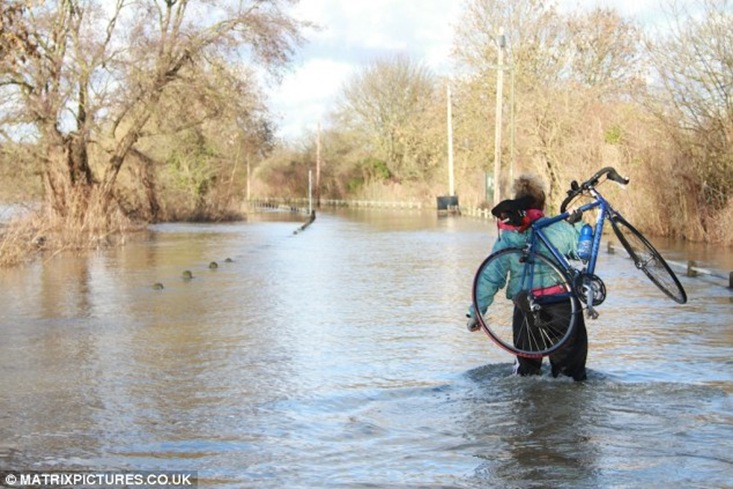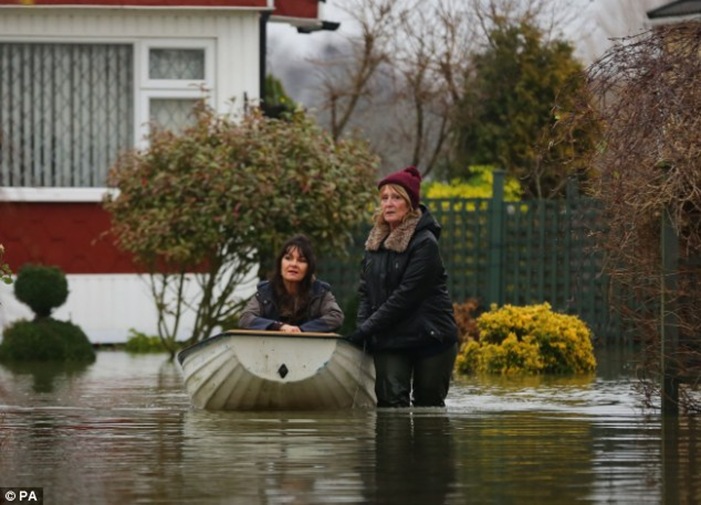Daily Mail
February 11, 2014

We all know what’s gone wrong, or we think we do: not enough spending on flood defences. It’s true that government cuts have exposed thousands of homes to greater risk, but too little public spending is a small part of the problem.
It is dwarfed by another factor, overlooked in public discussion: too much public spending.
Vast amounts, running into billions, are spent every year on policies that make devastating floods inevitable. This is the story that has not been told, a story of destructive perversity.
Flood defence, or so we are told almost everywhere, is about how much concrete you can pour. It’s about not building houses in stupid places on the flood plain and about using clever new engineering techniques to defend those already there. But to listen to the dismal debates of the past fortnight, you could be forgiven for believing that rivers rise in the plains; that there is no such thing as upstream; that mountains, hills, catchments and watersheds are irrelevant to the question of whether or not homes and infrastructure get drowned.
The story begins with a group of visionary farmers at Pontbren, in the headwaters of Britain’s longest river, the Severn. In the 1990s they realised that the usual hill-farming strategy – loading the land with more and bigger sheep, grubbing up the trees and hedges, digging more drains – wasn’t working.
It made no economic sense. The animals had nowhere to shelter, and the farmers were breaking their backs wrecking their own land. So they devised something beautiful. They began planting shelter belts of trees along the contours. They stopped draining the wettest ground and built ponds to catch the water instead. They cut and chipped some of the wood they grew to make bedding for their animals, which meant that they no longer spent a fortune buying straw. Then they used the composted bedding, in a perfect closed loop, to cultivate more trees.

One day a government consultant was walking over their fields during a rainstorm. He noticed something that fascinated him. The water flashing off the land suddenly disappeared when it reached the belts of trees the farmers had planted. This prompted a major research programme which produced the following astonishing results: water sinks into the soil under trees at 67 times the rate at which it sinks into the soil under grass.
The roots of the trees provide channels down which the water flows, deep into the ground. The soil there becomes a sponge, a reservoir that sucks up water and then releases it slowly. In the pastures, by contrast, the small, sharp hooves of the sheep puddle the ground, making it almost impermeable, a hard pan off which the rain gushes.
One of the research papers estimates that – even though only five per cent of the Pontbren land has been reforested – if all the farmers in the catchment did the same thing, flooding peaks downstream would be reduced by about 29 per cent. Full reforestation would reduce the peaks by about 50 per cent. For the residents of Shrewsbury, Gloucester and the other towns ravaged by endless Severn floods, that means – more or less – problem solved.
Did I say the results were astonishing? Well, not to anyone who has studied hydrology elsewhere.

For decades the Government has been funding scientists working in the tropics and using their findings to advise other countries to protect the forests or to replant trees in the hills to prevent communities downstream being swept away. But we forgot to bring the lesson home.
So will the rest of the Severn catchment, and those of the other unruly waterways of Britain, follow the Pontbren model? The authorities say they would love to do it. In theory.
Natural Resources Wales told me that these techniques ‘are hardwired into the actions we want land managers to undertake’. What it forgot to say is that all tree-planting grants in Wales have now been stopped. The offices responsible for administering them are closing down. If other farmers want to copy the Pontbren model, they must not only pay for the trees themselves, but they must also sacrifice the money they would otherwise have been paid for farming that land.
Here we approach the nub of the problem – for there is an unbreakable rule laid down by the EU’s Common Agricultural Policy. If you want to receive your single farm payment – by far the biggest component of farm subsidies – that land has to be free from what it calls ‘unwanted vegetation’. Land covered by trees is not eligible. The subsidy rules have enforced the mass clearance of vegetation from the hills. Just as the tree-planting grants have stopped, the land-clearing grants have risen.

In his speech to the Oxford Farming Conference, made during the height of the floods, the Environment Secretary, Owen Paterson, boasted that hill farmers ‘on the least productive land’ will now receive ‘the same direct payment rate on their upland farmland as their lowland counterparts’.
In other words, even in places where farming makes no sense because the land is so poor, farmers will now be paid more to keep animals there. But to receive this money, they must first remove the trees and scrub that absorb the water falling on the hills.
And that’s just the start of it.
Governments can now raise the special mountain payments, whose purpose is to encourage farming at the top of the watersheds, from £208 per hectare to £371.
This money should be renamed the flooding subsidy: it pays for the wreckage of homes, the evacuation of entire settlements, the drowning of people who don’t get away in time.
Pig-headed idiocy doesn’t begin to describe it.
The problem is not confined to livestock in the mountains. In the foothills and lowlands, the misuse of heavy machinery, overstocking with animals and other forms of bad management can – by compacting the soil – increase the rates of instant run-off from two per cent of all the rain that falls on the land to 60 per cent.
Sometimes ploughing a hillside in the wrong way at the wrong time can cause a flood even without exceptional rainfall. This practice has blighted homes around the South Downs (which arguably should never have been ploughed at all).
One house was flooded 31 times in the winter of 2000-2001 due to ploughing. Another, in Suffolk, below a field churned up by pigs, was hit 50 times. But a paper on floods of this kind found that ‘there are no (or only very few) control measures taken yet in the UK’. Under the worst Environment Secretary Britain has ever suffered, there seems little chance that much of this will change.
